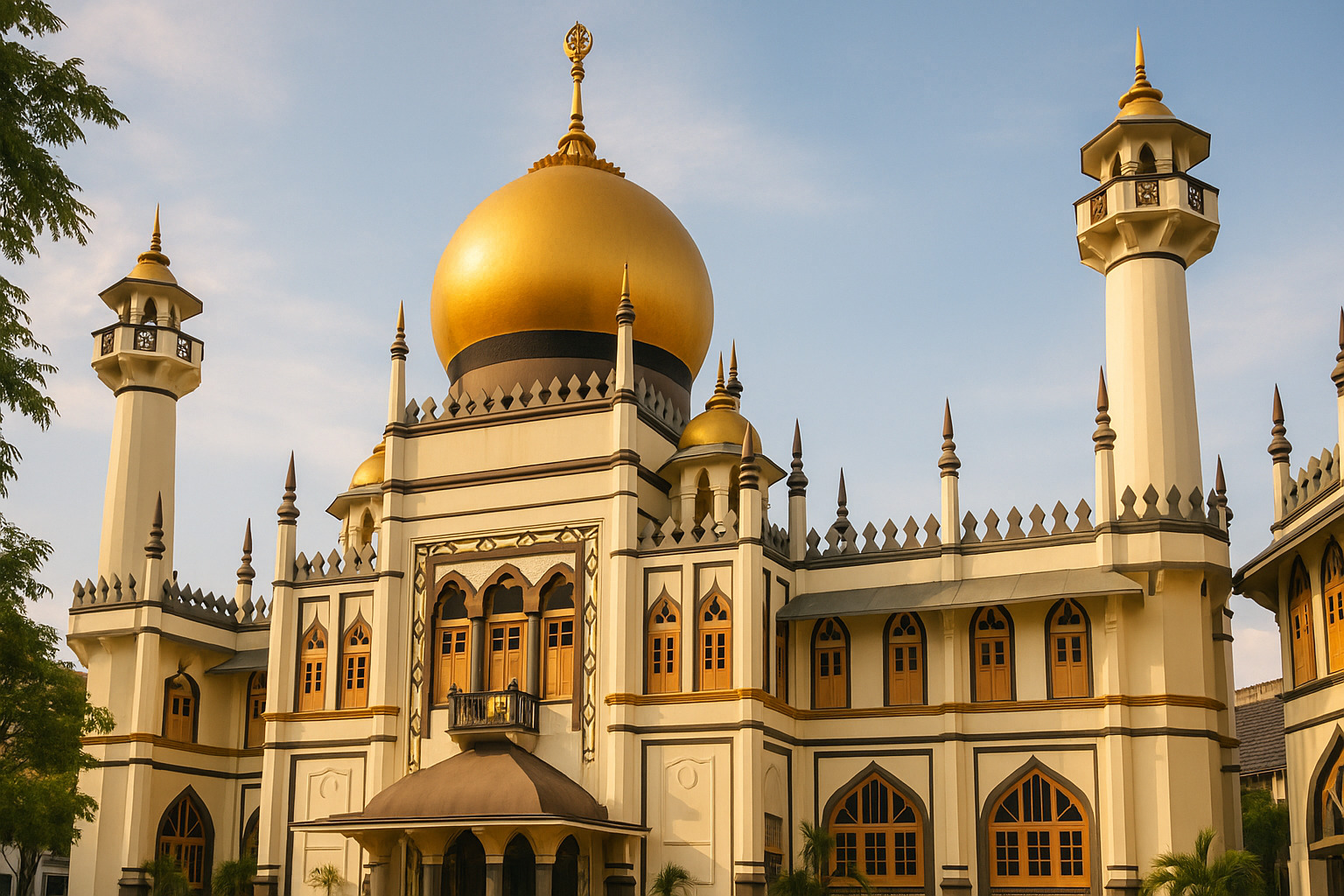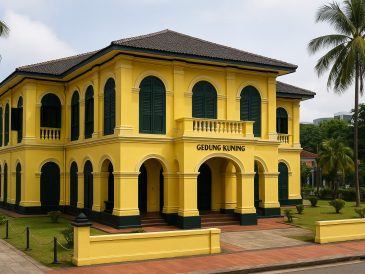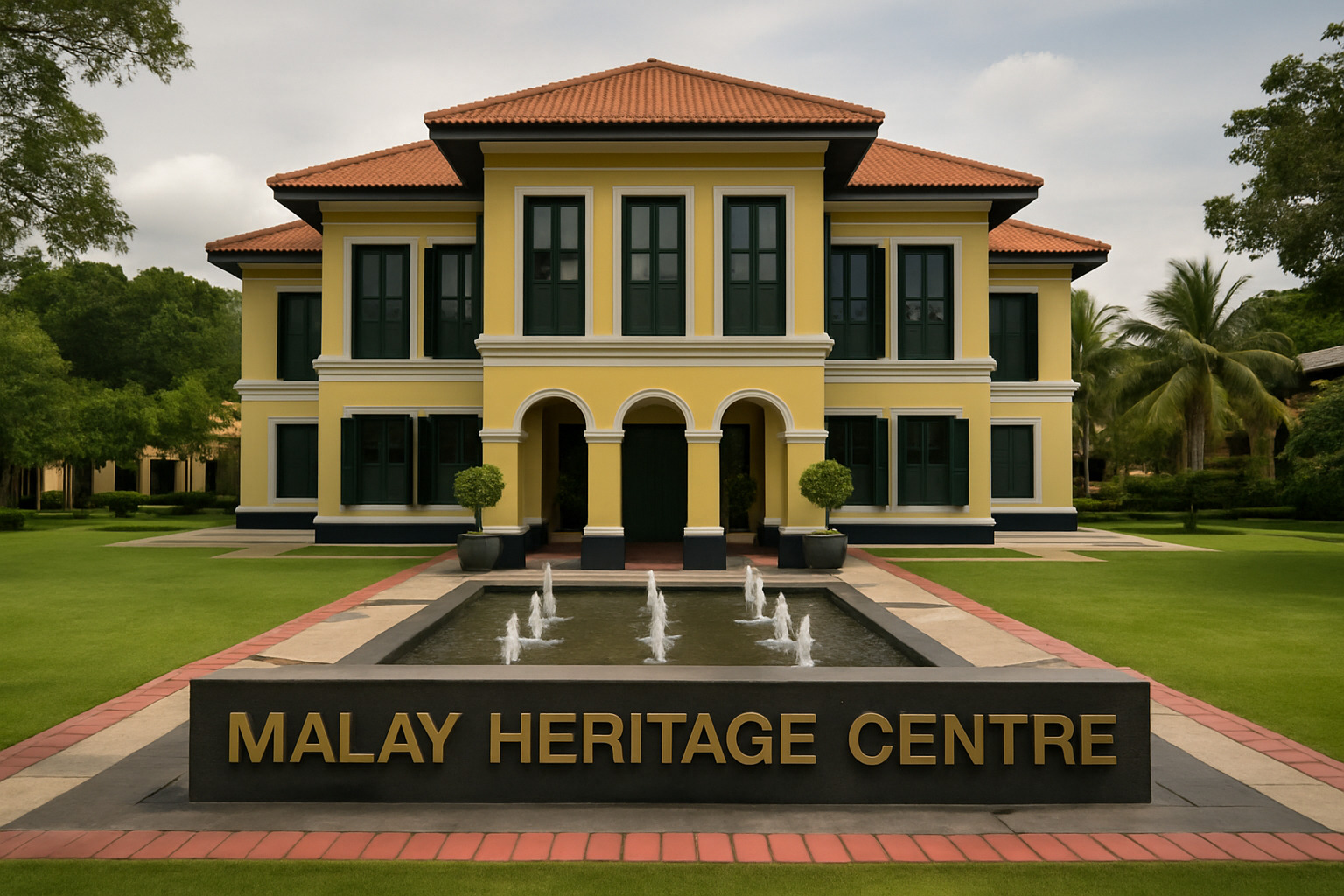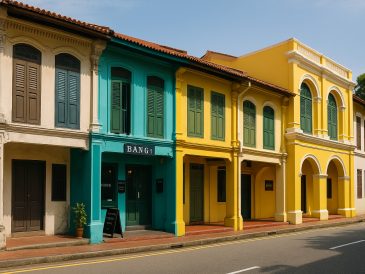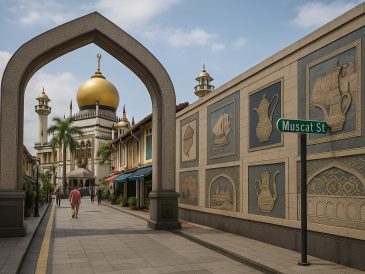If one structure defines Kampong Gelam, it’s the Sultan Mosque. Towering golden domes, geometric stained-glass windows, and a courtyard echoing with community — it’s not just a place of worship but a living landmark.
A Brief Look at Its Origins
Built in 1824 for Sultan Hussein Shah, the mosque originally stood as a royal gesture funded by the East India Company. By 1932, it was rebuilt in its current form by architect Denis Santry of Swan & Maclaren. The new structure blended Indo-Saracenic and Islamic elements, introducing onion-shaped domes, minarets, and a dramatic prayer hall supported by massive pillars.
One key feature: black glass bottle ends lining the base of the domes. These were donated by the poor — a quiet yet lasting testament that every contribution mattered.
Architectural Highlights Worth Noting
Sultan Mosque doesn’t whisper. It declares itself boldly through its design. Here’s what makes it visually and culturally magnetic:
- Golden Domes: Not just decoration. Their grandeur signals spiritual weight.
- Saracenic Influence: Horseshoe arches, symmetrical towers, and stylized floral patterns dominate the facades.
- Prayer Hall: One of the largest in Singapore, holding up to 5,000 worshippers.
- Mihrab: The niche inside the prayer hall that points to Mecca, ornately tiled and meticulously aligned.
- Minarets: Tall and slim, they act as both symbols and functional architectural elements for the call to prayer.
Cultural Significance Today
The mosque is still active. Beyond daily prayers, it plays host to:
- Friday Prayers: Drawing hundreds, the courtyard fills quickly.
- Ramadan Evenings: Post-iftar crowds gather in the surrounding area.
- School Visits & Walking Tours: Local guides stop here, sharing stories of trade, royalty, and religion.
Sultan Mosque isn’t isolated. It interacts with Bussorah Street, Arab Street, and Muscat Street. It’s central, yet porous — always part of the street rhythm.
Best Times to Visit
Tourists are welcome outside prayer times. Visitors should dress respectfully: long pants or skirts and covered shoulders. Robes are available at the entrance for those who need them.
Recommended hours:
- Monday to Sunday: 10 AM – 12 PM and 2 PM – 4 PM (closed during prayer services)
Avoid: Fridays between 11 AM and 2 PM due to congregational prayers.
What to Do Around the Mosque
Pair your visit with experiences nearby. Here’s a quick hit-list:
- Gelam Gallery – Singapore’s first outdoor art gallery just a short walk away.
- Arab Street – Textile, spice, and fragrance shopping.
- Haji Lane – Indie boutiques and streetwear.
- Malay Heritage Centre – Insight into Malay royal history.
- Kampong Gelam Cafés – Try teh tarik or a heritage-inspired meal.
Photography Tips
- Morning Light: Captures soft shadows and detailed relief.
- Evening Glow: Dome turns fiery under sunset.
- Symmetry Shots: Align your frame from Muscat Street for a full frontal view.
No drones allowed, and photography is restricted in prayer areas.
Local Voices
“This isn’t just a landmark. It’s the heartbeat of the area. I hear the call to prayer every morning. It’s a rhythm.”
– A vendor on Bussorah Street
“I’ve brought my children here to learn about where our traditions started.”
– A local teacher from nearby Joo Chiat
Key Visitor Information
- Location: 3 Muscat Street, Singapore 198833
- Nearest MRT: Bugis (EW12/DT14), Exit B
- Entry Fee: Free (donations encouraged)
- Languages for Tours: English, Malay, Arabic (on request)
Sultan Mosque isn’t just visited. It’s experienced. Through silence, through symmetry, through shared ground between faith and neighborhood, it remains one of the most significant landmarks in Singapore.
